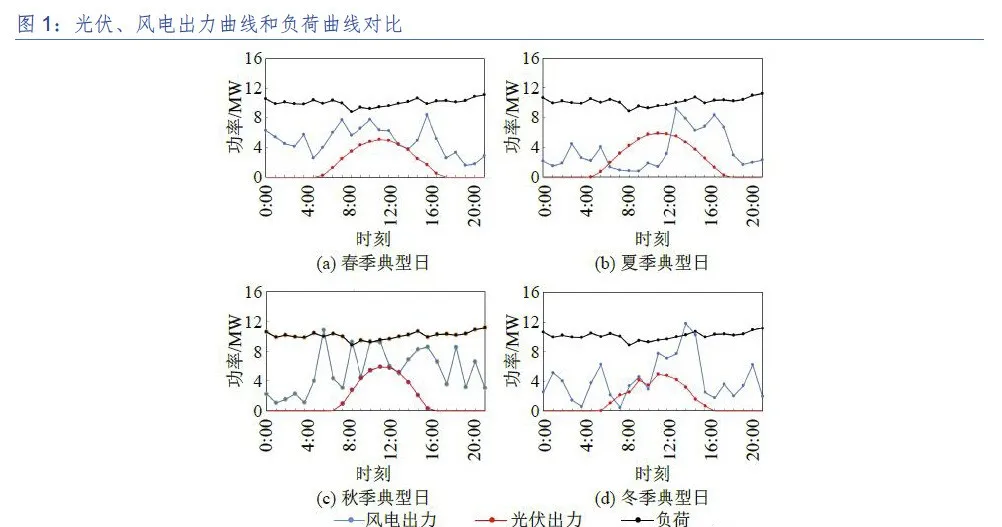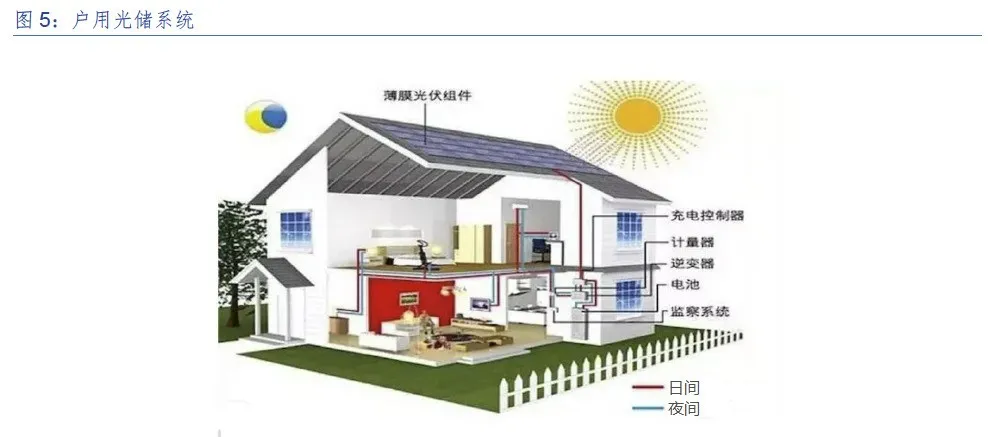Application of energy storage in scenarios of power generation, grid, and consumption
In the power system, the application scenarios of energy storage can be divided into generation side energy storage, grid side energy storage, and consumption side energy storage. The role played by different energy storage application scenarios varies.
(1) The main function of energy storage on the power generation side is to integrate renewable energy into the grid
Energy storage can assist renewable energy generation in meeting grid connection requirements while improving the utilization rate of renewable energy. New energy sources such as photovoltaics and wind power have fluctuating and intermittent characteristics, and the amount of electricity generated varies with the intensity of light and wind at different times. This characteristic leads to a mismatch between the new energy generation and the electricity demand on the consumer side. By configuring energy storage in wind and photovoltaic power plants, based on power plant output prediction and energy storage charging and discharging scheduling, renewable energy generation can be smoothly controlled, reducing instantaneous power changes and minimizing the impact on the power grid. When the electricity load is low and there is an excess of new energy generation, energy storage stations can timely store the excess electricity, reduce wind and solar power curtailment rates, and connect the stored electricity to the grid when the electricity load is high, improving the problem of new energy generation and consumption.

(2) The main functions of grid side energy storage are peak shaving, frequency regulation, and alleviating grid congestion
In terms of peak shaving, energy storage can achieve peak shaving and valley filling of electricity load, that is, power plants charge energy storage batteries during low electricity load periods and release the stored electricity during peak electricity load periods, thereby achieving a balance between electricity production and consumption.

The energy storage system has the ability to quickly and accurately adjust frequency. The frequency of China's power grid is 50Hz, with an allowable deviation of ± 0.2Hz, in order to maintain stable operation of the power grid and avoid damage to various electrical appliances. In actual operation, when the active power output of the power grid is less than the active power demand of the load, the system frequency will decrease, otherwise it will increase. Therefore, frequency modulation is needed to improve the stability of the power grid frequency. At present, the electricity market mainly relies on thermal power frequency regulation, but energy storage system frequency regulation has higher accuracy, and its output power matches the AGC (Automatic Generation Control) command well, resulting in better frequency regulation effect. Thermal power plants are equipped with frequency regulation and energy storage, which can significantly improve their frequency regulation capability.

Energy storage can alleviate grid congestion. Grid congestion refers to the situation where the demand for power transmission exceeds the actual transmission capacity of the power grid, and the cause of congestion is the imbalance of power generation and transmission capacity in different regions. Install the energy storage system upstream of the power grid side line. When a line blockage occurs, the energy that cannot be transmitted can be stored in the energy storage device. When the line load is less than the line capacity, the energy storage system will discharge back to the line.
Energy storage can be an alternative solution for upgrading or constructing new transmission and distribution equipment. In power transmission and distribution systems with loads close to equipment capacity, energy storage systems can effectively improve the power grid's transmission and distribution capacity through smaller installed capacity, thereby delaying the construction of new transmission and distribution facilities and reducing costs. Compared to the expansion of the transmission and distribution grid, the construction time of energy storage is shorter.
(3) The main functions of energy storage on the electricity side are spontaneous self use of electricity, peak valley price arbitrage, and capacity cost management
The functions of energy storage on the electricity side mainly include spontaneous self use of electricity, arbitrage of peak valley price differences, capacity cost management, and improving power supply reliability. According to different application scenarios, energy storage on the power consumption side can be divided into industrial and commercial energy storage and household energy storage, which are generally used in conjunction with distributed photovoltaics. Distributed photovoltaic power generation refers to facilities built near users, characterized by balance regulation in the distribution system in the form of self use and surplus electricity grid connection by users.

Industrial and commercial users can use energy storage for valley peak price arbitrage and capacity cost management. In the electricity market implementing peak and valley electricity prices, charging the energy storage system at low prices and discharging it at high prices can achieve peak and valley electricity price arbitrage and reduce electricity costs. In addition, industrial enterprises that are subject to the two-part electricity pricing system can use energy storage systems to store energy during low demand periods and discharge during peak loads, thereby reducing peak power and declared maximum demand, achieving the goal of reducing capacity electricity bills.
Household photovoltaic distribution and storage can improve the level of self generation and self use of electricity. Due to high overseas electricity prices and poor power supply stability, it drives the demand for household photovoltaic installation. Considering that photovoltaics generate electricity during the day and users generally have higher loads at night, configuring energy storage can better utilize photovoltaic power, improve self consumption levels, and reduce electricity costs.
Communication base stations, data centers, and other fields require energy storage for backup power supply. When a power outage occurs, energy storage can supply stored electricity, avoiding power interruption during the fault repair process. In the past, lead-acid batteries were the mainstream backup power technology route, but with the increasing power consumption of 5G base stations, lithium iron phosphate batteries are expected to replace lead-acid batteries due to their high energy density and cycle life.
Portable energy storage can improve the reliability of off grid electricity usage. Portable energy storage is a power system with built-in lithium-ion batteries that can provide stable AC/DC voltage output. It can be applied in off grid power scenarios such as outdoor travel and emergency disaster preparedness. In the past, outdoor and emergency power supply came from small fuel generators, but they had problems such as loud generator noise, complex operation, environmental pollution, and poor portability. Mobile energy storage products derived from lithium batteries are expected to replace small fuel generators

